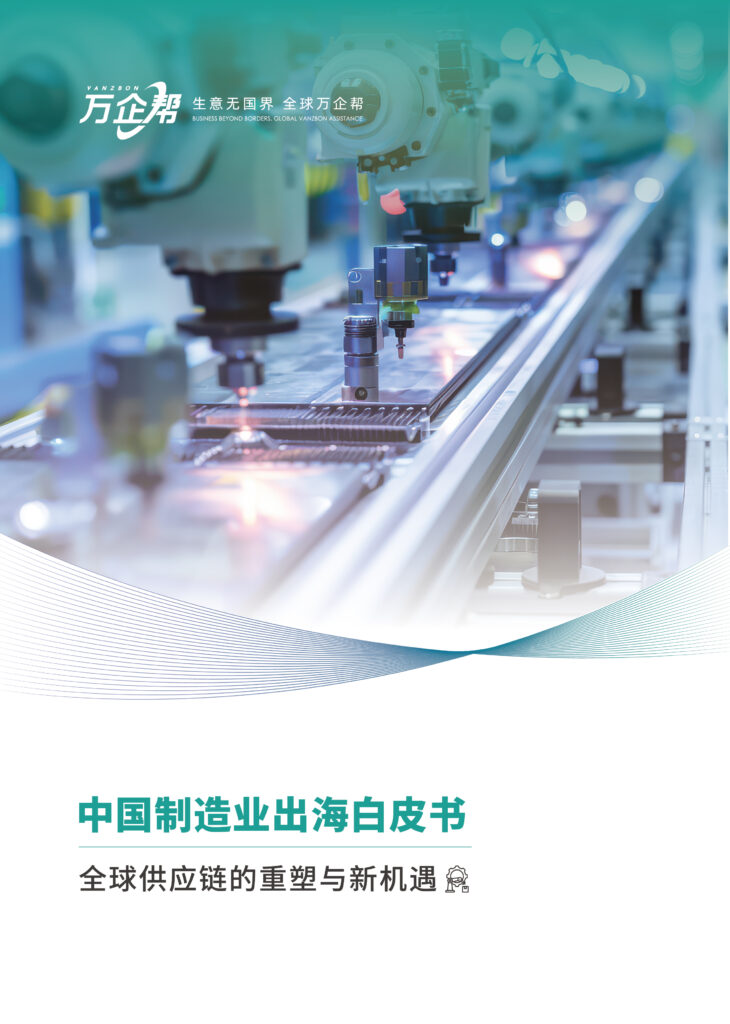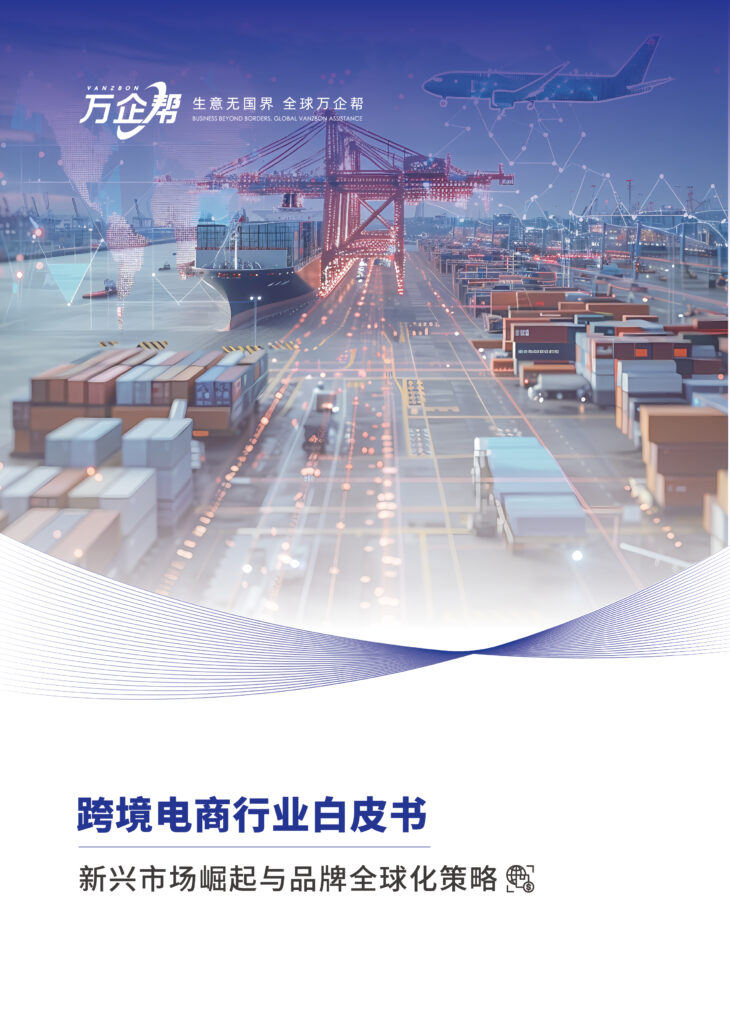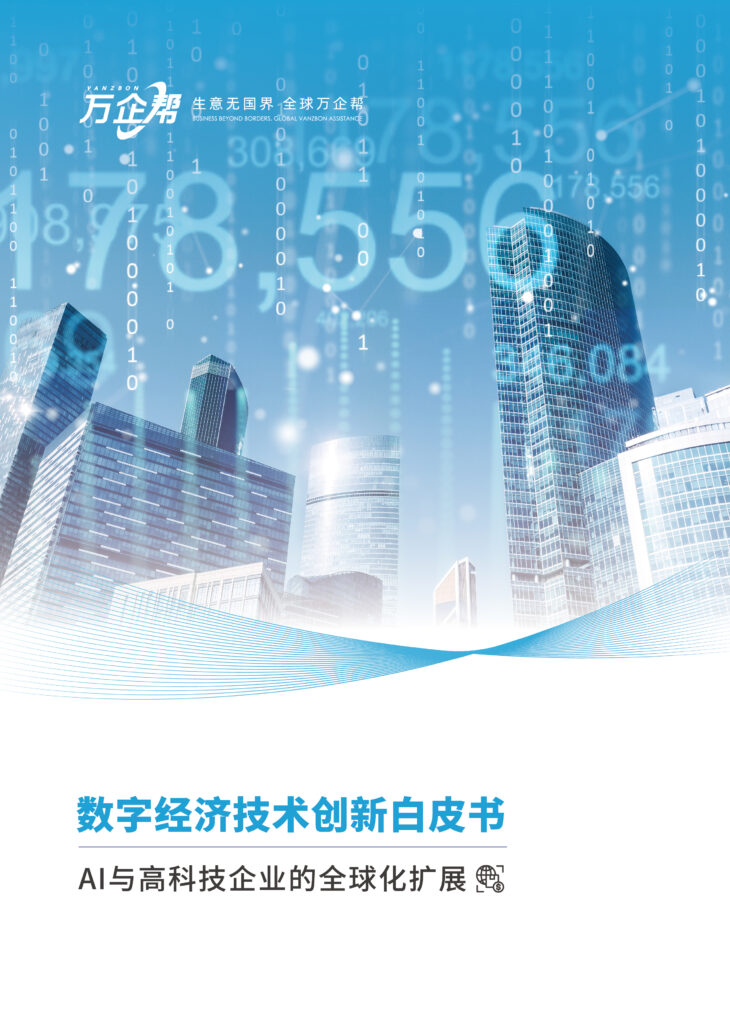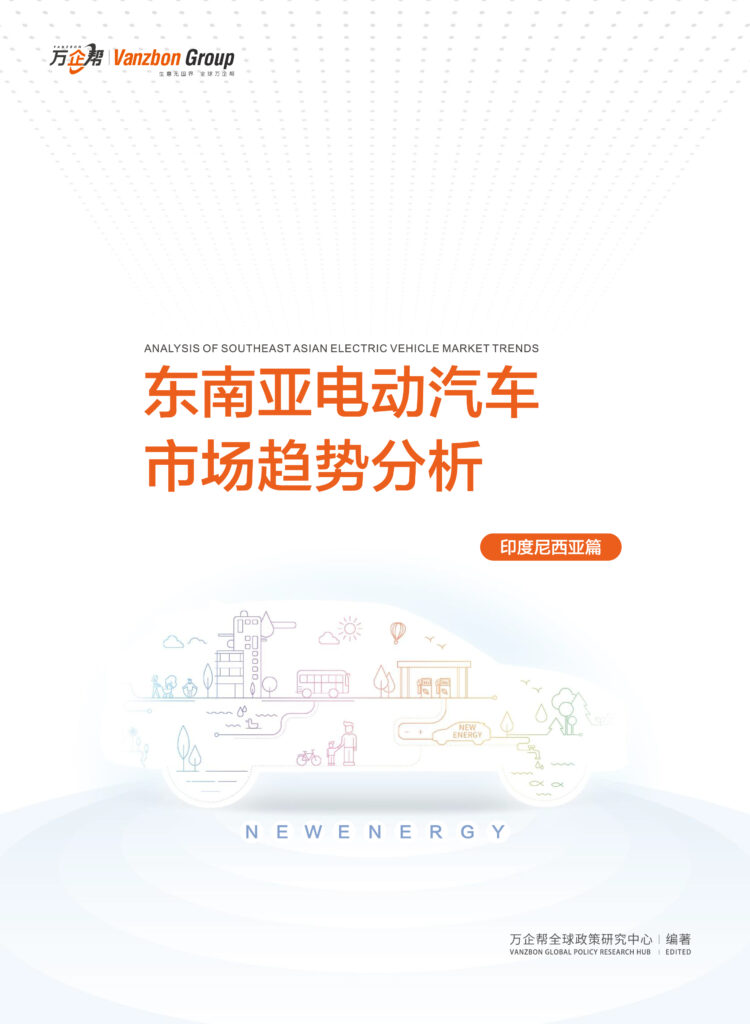As the global economy becomes increasingly close, the importance of business exchanges between China and Japan, as important engines of the Asian and even world economies, is self-evident. As close neighbors, the two countries are inextricably linked in terms of geographical location and cultural origins. However, in modern business practices, the challenges brought about by cultural differences cannot be ignored.
China is the world’s second largest economy, and Japan is the world’s third largest economy. The trade volume between the two countries reaches hundreds of billions of dollars each year. Whether in manufacturing, technological innovation, or service industries, Chinese and Japanese companies have broad cooperation space and huge complementarity. However, if you want to reap fruitful results in this fertile land of opportunities, relying solely on business acumen is far from enough.
Understanding and properly handling the cultural differences between China and Japan is a key factor in determining the success or failure of business cooperation. On the surface, both countries seem to follow the collectivist culture of Asia, but upon closer inspection, there are subtle and important differences in decision-making methods, communication styles, business etiquette, and contract concepts.
These differences are like reefs hidden under the surface of business exchanges, which may cause cooperation to run aground if not handled with care. On the contrary, if we can deeply understand these differences, we can not only avoid potential conflicts and misunderstandings, but also turn them into competitive advantages and open the door to success.
Therefore, for any entrepreneur or professional who hopes to make a difference in the Sino-Japanese business arena, improving the understanding of the differences in Sino-Japanese business culture and cultivating cross-cultural business capabilities are crucial compulsory courses. This article will help readers comprehensively review their own cognitive level through a series of carefully designed assessment questions, and provide in-depth analysis and practical improvement suggestions to escort your Sino-Japanese business journey.
Assessment Overview
This assessment is designed to help you gain a deeper understanding of the differences in business culture between China and Japan, and to lay the foundation for your future success in business exchanges between China and Japan. By taking this assessment, you can not only evaluate your cross-cultural business capabilities, but also discover potential knowledge blind spots and areas that need improvement. This is of great guiding significance for Chinese entrepreneurs who are considering entering the Japanese market, or business people who have already started business in Japan but want to further improve.
Another important purpose of the assessment is to increase participants’ sensitivity to cultural differences between China and Japan. In today’s globalized world, cultural intelligence has become one of the key factors for business success. Through this assessment, you will be able to better understand the Japanese business mindset, so that you can make smarter decisions in negotiations, communications, and daily business, and avoid misunderstandings and losses caused by cultural differences.
This assessment contains 50 carefully designed multiple-choice questions, covering 10 core areas including business etiquette, communication style, decision-making process, time concept, interpersonal relationship, contract concept, corporate hierarchy, work attitude, innovation and tradition, and risk attitude. Each area contains 5 questions, aiming to comprehensively assess your understanding of the differences between Chinese and Japanese business cultures.
The score is based on a 100-point system, with 2 points for each question and a full score of 100. Based on your score, we will provide you with a detailed interpretation and personalized improvement suggestions. The scoring range is as follows:
- 90-100 points: Cross-cultural business expert level
- 80-89 points: Cross-cultural business proficiency level
- 70-79 points: Cross-cultural business advanced level
- 60-69 points: Entry-level cross-cultural business
- Below 60 points: Cross-cultural business beginners
It should be emphasized that this assessment is not just a score assessment, but more importantly a learning process. After completing the assessment, we will provide detailed explanations and cultural background analysis for each question to help you deeply understand the cultural logic behind each option. In addition, we will also provide targeted learning resources and practical suggestions based on your performance to help you continuously improve your cross-cultural business capabilities.
Let’s start this journey to gain a deeper understanding of the differences between Chinese and Japanese business cultures. No matter what your final score is, I believe
Assessment Questions
1.Business Etiquette
(1) When handing over a business card in Japan, you should:
A. Hand it over with both hands, facing the other person
B. Hand it over with one hand and place it casually on the table
C. Pass it to the other party in a folder
D. Wait for the other party to ask for it
(2) Which of the following behaviors is the most inappropriate at a Japanese business dinner?
A. Eat slowly and keep the same eating pace as others
B. Take the initiative to pour wine for others
C. Pointing at others or food with chopsticks
D. Thank the host at the end of the meal
(3) When visiting a Japanese company, which of the following is the most appropriate approach?
A. Arrive 5 minutes early
B. Arrive on time
C. Being 5-10 minutes late shows respect
D. Arrive 30 minutes early to show your sincerity
(4) What kind of attire is the least appropriate in Japanese business settings?
A. Dark suit
B. Plain shirt
C. Casual wear
D. Tie
(5)Which of the following greetings is most appropriate in Japan?
A. Warm hug
B. Handshake
C. Bow
D. Cheek kiss
(6) Which of the following behaviors is considered impolite in Japanese business meetings?
A. Keep quiet and listen attentively
B. Frequently interrupting the speaker to ask questions
C. Check the agenda before the meeting
D. Take notes
2. Communication method
(1) In Japanese business communication, the concept of “heart-to-heart communication” (あうんの呼吸) means:
A. Express your thoughts directly
B. Communicate information through nonverbal cues
C. Speak your mind
D. Avoid any form of communication
(2) The Japanese often use the term “tabu” (たぶん) in business negotiations. It actually means:
A. Very unlikely
B. High certainty
C. Absolutely impossible
D. No opinion
(3)Which of the following expressions is the least common in Japan?
A. Indirect
B. Straightforward
C. Use hints
D. Avoid saying “no”
(4) The characteristics of Japanese business mail are:
A. Be concise and get straight to the point
B. Long and detailed explanation
C. Start with honorifics and gradually get to the point
D. Only discuss work, no small talk
(5) In Japanese business settings, silence is generally understood as:
A. Dissatisfaction or disagreement
B. Think or Agree
C. Ignorance or confusion
D. Arrogance or disdain
(6) When expressing their objections, Japanese people often:
A. Just say “no”
B. Use “but” (でも) to draw out different opinions
C. Complete silence
D. Say “Let me think about it.”
(7)Which of the following behaviors is most popular in Japanese business speeches?
A. Frequent use of humor and jokes
B. Provide a lot of detailed data and charts
C. Speak loudly and passionately
D. Frequent interaction with the audience
3. Decision-making process
(1) The nemawashi decision-making process in Japanese companies refers to:
A. The decision is made by the top leader alone
B. Informal communication and consensus building before formal meetings
C. Make decisions by voting
D. Complete reliance on the advice of external consulting firms
(2) In Japanese companies, who usually makes important decisions?
A. CEO decides alone
B. Board of Directors Voting
C. Middle managers jointly decide
D. Reach consensus after full discussion at all levels
(3) Japan’s “ringisho” system is mainly used for:
A. Record the meeting content
B. Convey high-level orders
C. Bottom-up proposal and approval
D. External Communications
(4) How are new ideas typically adopted in Japanese companies?
A. Implement innovative ideas immediately
B. Gradually advancing through approval and discussion
C. Completely reject any change
D. Only adopt ideas from the top
(5) When making decisions, Japanese companies usually consider the following factors the most:
A. Short-term profits
B. Long-term stability and harmony
C. Personal Merit
D. International Trends
(6)Which of the following decision-making styles is least common in Japan?
A. Brainstorming
B. Autocratic
C. Step by step
D. Seeking consensus
4. Time concept
(1) In Japanese business culture, being on time means:
A. Arrive 5-10 minutes early
B. Arrive at the scheduled time
C. Being 5-10 minutes late is acceptable
D. Time is not important, you can arrive at any time
(2) When planning a project, Japanese companies usually:
A. Focus only on short-term goals
B. Develop detailed long-term plans
C. Act on impulse, don’t make plans
D. Complete reliance on advice from external consultants
(3) In Japan, business meetings usually:
A. Frequent timeouts
B. Strictly finish at the scheduled time
C. End early
D. No fixed end time
(4) Japan’s Ho-Ren-So working method emphasizes:
A. Work independently and reduce communication
B. Frequent and timely reporting, communication and discussion
C. Communicate only when problems arise
D. Annual work summary
(5) In Japanese companies, overtime is generally considered as:
A. Performance of inefficiency
B. Demonstration of dedication and loyalty
C. Behavior that warrants additional payment
D. Behaviors that should be avoided
(6) The concept of “total mobilization” (souaika) in Japanese business culture refers to:
A. All employees take leave at the same time
B. Complete important tasks with full participation within the specified time
C. Weekly plenary meetings
D. Annual sports competition
5. Interpersonal relationships and social networks (connections)
(1) In Japanese business culture, “Nomi-nication” refers to:
A. Online social networks
B. Building relationships through drinking together
C. Formal business meeting
D. Written communication
(2) The Japanese concept of “shayou” mainly refers to:
A. Personal recreation time
B. Overtime work
C. Social activities conducted in the name of the company
D. Work from home
(3) In Japan, which of the following behaviors is most conducive to building good business relationships?
A. Frequent changes of partners
B. Maintain a long-term and stable cooperative relationship
C. Focusing only on contract terms and ignoring interpersonal relationships
D. Establishing a position through fierce competition
(4) The role of Japan’s “hometown associations” (Kenjinkai) in business networks is:
A. Formal business organization
B. Informal communication networks based on geographical relationships
C. Industry Associations
D. Government departments
(5) In Japan, exchanging business cards is considered:
A. Outdated customs
B. Important Rituals for Establishing Initial Relationships
C. Only required in formal occasions
D. Popular practices among young people
(6) The Japanese concept of giri is mainly reflected in business relationships as follows:
A. Pursuit of maximum benefit
B. Fulfilling social obligations and responsibilities
C. Avoid all interpersonal interactions
D. Focus only on legal contracts
(7) In Japanese business culture, nemawashi is not only a decision-making process, but can also be seen as:
A. Ways to avoid interpersonal communication
B. An important means of establishing and maintaining interpersonal networks
C. Formal business negotiations
D. A euphemism for firing an employee
6. Contract Concept
(1) In Japanese business culture, verbal promises are generally viewed as:
A. It’s meaningless
B. Has the same weight as a written contract
C. More important than a written contract
D. Only valid for small transactions
(2) When signing a contract, Japanese companies place the most importance on:
A. Detailed legal terms
B. Long-term relationship and mutual trust between the two parties
C. Maximize short-term benefits
D. Make the terms as vague as possible
(3) In Japan, the most common ways to resolve commercial disputes are:
A. Immediate legal recourse
B. Settlement through negotiation and mediation
C. Ignore the problem completely
D. Terminate all partnerships
(4) Compared with the West, Japan’s “contract spirit” emphasizes:
A. The literal meaning of the contract
B. Relationship and consensus behind the contract
C. Legal binding force of the contract
D. Flexibility to change at any time
(5) In Japanese business practice, which of the following statements about contracts is most accurate?
A. Once a contract is signed, it cannot be changed
B. Contract terms can be flexibly adjusted according to circumstances
C. The contract is just a formality and has no actual binding force
D. Only international contracts are legally binding
(6) When drafting a contract, Japanese companies usually:
A. Hire the best legal team
B. Focus on the common interests and long-term development of both parties
C. Include as many terms as possible that are beneficial to you
D. Completely copy the Western contract template
- Corporate Hierarchy
(1) The organizational structure of traditional Japanese companies is usually:
A. Flat management
B. Strict hierarchy
C. Completely unstructured organic tissue
D. Matrix management
(2) How are decisions usually made in Japanese companies?
A. Top-down commands
B. Bottom-up proposals followed by top-down approval
C. Fully democratic voting
D. External Consultant Decision
(3) “Jouyaku” in Japanese companies refers to:
A. Ordinary employees
B. Middle managers
C. Senior managers
D. Intern
(4) Japan’s “lifetime employment” system mainly applies to:
A. All employees
B. Mainly regular employees of large companies
C. Applicable only to senior managers
D. No longer exists
(5) In Japanese companies, the seniority system means:
A. Promotion based solely on competence
B. Salary and status are based primarily on seniority
C. Random promotion system
D. Only young people can be promoted
(6) The concept of “Kaisha Ningen” in Japanese companies refers to:
A. Company Robot
B. Employees who closely associate their personal identity with the company
C. Employees who frequently change jobs
D. Part-time employees
(7) In Japanese companies, “Habatsu” usually refers to:
A. Trade unions
B. Informal power groups within the company
C. Cross-company industry associations
D. Temporary project team
8. Work attitude and professional ethics (continued)
(1) “Service spirit” in the Japanese workplace usually refers to:
A. Only be good to customers
B. Be considerate and thoughtful to colleagues, superiors and customers
C. Sacrifice personal interests
D. Limited to service industry
(2) The Japanese proverb “Perseverance for three years” is reflected in the workplace as follows:
A. Frequent job hopping
B. Maintain patience and perseverance in the face of difficulties
C. Mandatory job transfer every three years
D. Retire after working for only three years
(3) In the Japanese workplace, the concept of “harmony is the most valuable” mainly emphasizes:
A. Personal interests come first
B. Maintaining team harmony and cooperation
C. Avoid all conflicts and communication
D. Focus only on work efficiency
9. Innovation and tradition
(1) The attitude that Japanese companies usually take towards innovation is:
A. Radical disruptive innovation
B. Incremental improvement and continuous improvement
C. Completely reject any form of innovation
D. Only adopt foreign innovations
(2) The spirit of “Monodzukuri” is represented by Japanese companies:
A. Mass production of cheap products
B. Continuously improving manufacturing technology and craftsmanship
C. Fully automated production
D. Focus only on appearance design
(3) When faced with new technologies, Japanese companies usually:
A. Immediate and comprehensive adoption
B. Careful assessment and gradual integration
C. Completely refuse
D. Wait for other companies to try first
(4) In product development, Japanese companies usually pay more attention to:
A. Quick launch to market
B. Long-term testing and quality assurance
C. Low-cost production
D. Exaggerated marketing strategies
(5) Japan’s concept of “Nuguitori Innovation” refers to:
A. Radical technological innovation
B. Make small improvements to existing products or processes
C. Copying a competitor’s ideas
D. An approach to innovation management
(6) In Japanese corporate culture, the relationship between tradition and innovation is usually viewed as:
A. Opposite, must choose one
B. Complementary, requiring balance and integration
C. Two completely unrelated fields
D. Tradition always wins over innovation
(7) The main difference between Japan’s “kaizen” and “kaikaku” is that:
A. No difference, it is the same concept
B. Kaizen focuses on continuous small improvements, while innovation refers to large-scale changes
C. Improvement only applies to manufacturing, while innovation applies to the service industry
D. Improvement is mandatory, innovation is voluntary
10. Risk attitude
(1) Compared with Western companies, Japanese companies usually make the following decisions in their business decisions:
A. More inclined to take risks
B. More conservative and risk-averse
C. No consideration of risk factors
D. Focus only on short-term risks
(2) The role of Japan’s Nemawashi decision-making process in risk management is:
A. Increase decision risk
B. Reduce decision-making risks through extensive consultation
C. Completely avoid all risks
D. Shift the risk to others
(3) When faced with a business crisis, Japanese companies usually:
A. Immediately file for bankruptcy
B. Overcoming difficulties through reorganization and joint efforts
C. Ignore the problem completely and hope it will be solved automatically
D. Seek direct government intervention
(4) What kind of risk attitude does the long-term planning of Japanese companies usually reflect?
A. Taking shortcuts and pursuing short-term high returns
B. Focus on stability and sustainable development
C. No long-term planning
D. Risks of focusing only on overseas markets
(5) In Japan, the impact of the “keiretsu” relationship between enterprises on risk management is:
A. Increased competition risk among enterprises
B. Diversify risks through cross-holding and cooperation
C. Completely eliminates all business risks
D. Focus only on financial risks
(6) Japanese companies’ strict attitude towards product quality control reflects:
A. Fear of innovation
B. Emphasis on risks to brand reputation and long-term customer satisfaction
C. Excessive focus on costs
D. Legally mandatory requirements
(7) In their multinational operations, Japanese companies usually:
A. Blind expansion, ignoring risks
B. Careful evaluation and gradual entry into new markets
C. Avoid internationalization altogether
D. Entering new markets only through mergers and acquisitions
Detailed answers and cultural background explanations
1. Business etiquette
In Japanese business settings, exchanging business cards is an important etiquette. Handing over a business card with both hands and carefully reading the contents of the other party’s card is a sign of respect for the other party. This stems from the importance of “etiquette” in Japanese society, which can be traced back to the code of conduct of the samurai class in the Edo period. In contrast, the exchange of business cards in Chinese business settings is more casual. Understanding this difference will help you establish a good first impression in Japan.
2. Communication method
Japanese people often use implicit and euphemistic expressions in business communication. For example, “consider it” may mean a refusal. This communication style is rooted in Japan’s “harmony” culture, which emphasizes maintaining group harmony. Chinese communication is relatively direct. Recognizing this difference can avoid misunderstandings in negotiations and improve communication efficiency.
3. Decision-making process
Japanese companies usually make decisions through the “discussion system”, which is a process of approval from the bottom up. This reflects the collectivist characteristics of Japanese society, which emphasizes consensus. In contrast, Chinese companies tend to make decisions more centralized and faster. Understanding this difference will help you correctly assess project progress when working with Japanese partners.
4. Time concept
The Japanese attach great importance to punctuality, and arriving 5-10 minutes early is considered polite. This concept stems from Japan’s craftsmanship and pursuit of efficiency. Although China also attaches importance to punctuality, its tolerance is relatively high. In Japanese business activities, strictly adhering to the schedule can show professionalism and sincerity.
- Relationships and social networks
The Japanese business world values ”relationships” (en), but they are constructed differently from Chinese “relationships” (guanxi). Japanese relationships are built more on long-term trust and reciprocity rather than short-term exchange of benefits. Understanding this subtle difference is crucial to building lasting business relationships in Japan.
6. Contract Concept
In Japanese business culture, verbal promises are often as important as written contracts. This is due to the high level of trust in Japanese society and the traditional virtue of “keeping your word”. In contrast, China prefers detailed written contracts. When working with Japanese partners, you should attach equal importance to verbal promises and written agreements.
7. Corporate Hierarchy
Japanese companies generally have a strict hierarchy system, which can be traced back to the social structure of the feudal era. Respect for superiors and subordinates is extremely important in Japanese business dealings. The concept of hierarchy in Chinese companies is relatively weak. Understanding this difference will help you properly handle interpersonal relationships in Japanese companies.
8. Work attitude and professional ethics
Japan’s “corporate warrior” culture emphasizes loyalty and dedication to the company. This attitude is rooted in Japan’s collectivist culture and the spirit of Bushido. In contrast, China’s workplace culture is more diverse. Understanding this difference can better motivate and manage Japanese employees.
9. Innovation and tradition
Japanese companies often seek a balance between maintaining tradition and pursuing innovation. This reflects Japanese society’s respect for tradition and pursuit of technological progress. Chinese companies tend to be more inclined to innovate quickly. When promoting products or services in the Japanese market, it is necessary to consider how to integrate innovation and traditional elements.
10. Risk attitude
Japanese business culture is generally risk-averse and emphasizes steady operations. This attitude is partly due to Japan’s geographical environment and historical experience. In contrast, Chinese entrepreneurs are often more willing to take risks. When doing business in Japan, a step-by-step strategy is often easier to gain recognition and trust.
By deeply understanding these cultural differences and their roots, entrepreneurs can better seize opportunities and avoid misunderstandings in Sino-Japanese business interactions, thereby achieving win-win business cooperation.
Detailed answers and cultural background explanations
In terms of business etiquette, Japan’s business card exchange ceremony (name-study exchange) is far more complicated than China’s. In Japan, handing over a business card with both hands and carefully reading the contents of the other party’s business card is basic etiquette. This stems from the emphasis on details and respect for others in Japanese culture. The tradition of the samurai class exchanging family crests and identity information in the Edo period has evolved into modern business card culture. In contrast, China’s business card exchange is more casual and focuses more on substantive communication.
In terms of communication style, Japanese people tend to express themselves in an implicit and euphemistic way, and often communicate in a “chi wo ren mu” way. This is closely related to Japan’s collectivist culture, which pursues harmony and avoids direct conflicts. In contrast, Chinese communication is often more direct, and even heated discussions may occur in business situations. This difference can be traced back to the different degrees of influence of Confucian culture in the two countries.
In the decision-making process, Japanese companies usually adopt the “Jiyi system” (a system of approval at each level), emphasizing collective decision-making and consensus. This system originated in the Meiji period and aims to balance the opinions of all parties and avoid arbitrary decisions. Chinese companies tend to be more flexible, and decision-making power is usually concentrated at the top, which is related to China’s traditional family business culture and the needs of modern rapid development.
Regarding the concept of time, the Japanese are known for being strict and punctual, which is related to the precise timekeeping culture that began in Japan during the Edo period. After Tokugawa Ieyasu unified Japan, he implemented a precise time system in order to manage the country. The Chinese concept of time is relatively flexible, which is partly due to the influence of agricultural society and the prevalence of the “almost” culture.
In terms of interpersonal relationships and social networks (人焈), Japanese society places great emphasis on the concept of “縁” (fate). Business relationships are often established through intermediaries, a practice that can be traced back to the relationship networks of the feudal era. In contrast, China’s “guanxi” culture is more direct and extensive, originating from the Confucian concept of the “Five Relationships”, which emphasizes the importance of social relationships.
In terms of contract concepts, Japanese people tend to view contracts as the beginning of a relationship rather than the final constraint. This flexibility stems from the emphasis Japanese society places on harmony and mutual trust. In contrast, in the Chinese business environment, contracts are more often viewed as legally binding documents, a concept that has been strengthened with the construction of the legal system after the reform and opening up.
In terms of corporate hierarchy, Japanese companies are usually well-organized and emphasize seniority and seniority. This feature can be traced back to the hierarchy of the Tokugawa shogunate. Chinese corporate structures are relatively flat, especially in emerging industries, which reflects the rapid changes in Chinese society in recent years and the pursuit of efficiency.
In terms of work attitude and professional ethics, Japan’s “corporate warrior” culture emphasizes loyalty and dedication to the company. This phenomenon originated during the economic recovery period after World War II, when companies offered employees lifetime employment in exchange for loyalty. China’s workplace culture is more diverse, with both the traditional “rooted” mentality and modern career mobility.
In terms of the balance between innovation and tradition, Japan tends to optimize existing technologies, which is related to the Japanese craftsmanship and pursuit of perfection. China is more inclined to breakthrough innovation, which stems from the “catch-up” mentality and the policy environment that encourages innovation since the reform and opening up.
Finally, in terms of risk attitude, Japanese business culture is generally more conservative, which is related to Japan’s island geographical environment and historical pursuit of stability. In contrast, Chinese entrepreneurs are often more willing to take risks, an attitude that can be traced back to the wave of reforms and the “Great Leap Forward” development thinking since modern times.
Improvement Suggestions
After realizing the differences in business culture between China and Japan, many people may feel confused and don’t know how to improve. This section will provide you with specific improvement suggestions to help you better cope with the cultural challenges in business exchanges between China and Japan.
First, in terms of targeted learning resources, we strongly recommend the book “Japanese Business Etiquette and Culture”, which is written by a Chinese entrepreneur who has worked in Japan for a long time and combines theory and practice. In addition, there are a large number of free business culture guides on the official website of the Japan External Trade Organization (JETRO), which are worth reading carefully. For those who want to learn systematically, the “Japanese Business Culture and Systems” online course provided by Waseda University is an excellent choice.
Secondly, a practical practice method is essential to improve cross-cultural business capabilities. We recommend that you actively participate in Japanese cultural exchange activities, such as local Japanese cultural festivals or Japanese language corners. Try to establish business partnerships with Japanese people and conduct simulated business negotiations. In addition, watching documentaries and TV dramas related to Japanese business can also help you understand Japanese business culture more intuitively. For example, NHK’s “Project X” series well shows the decision-making process and teamwork spirit of Japanese companies.
Finally, in terms of cross-cultural communication skills, maintaining an open and respectful attitude is the foundation. It is important to learn to “read the words and expressions” and understand the implicit way Japanese people express themselves. In business situations, pay attention to using appropriate honorifics and show a humble attitude. Develop the ability to listen. Japanese business culture often values listening and thinking time. At the same time, learn to use the “nemawashi” method to communicate with all parties privately before the formal meeting to reach a consensus.
Remember, adapting to a new business culture is a gradual process. Don’t be discouraged by mistakes in your first attempts, but view each cross-cultural exchange as an opportunity to learn. Through continuous practice and reflection, you will be able to navigate the Sino-Japanese business exchanges with ease and open up a new path to success for your career.
Case Analysis
1. Successful cases: Companies that make good use of cultural differences
Muji’s success story in Japan is a classic. The Chinese retail giant fully understood and respected Japanese consumers’ preference for simple design and high-quality products. Instead of forcing the promotion of Chinese-style ornate decorative styles, Muji cleverly adjusted its product line to a simple design that conforms to Japanese aesthetics. The company also pays special attention to the functionality and durability of its products, which just happens to cater to the pragmatic tendencies of Japanese consumers.
What is more worth mentioning is that MUJI has keenly grasped the importance that Japanese society attaches to environmental protection. The company has launched a series of products using recyclable materials and has taken the lead in implementing a plastic bag charging policy in the Japanese market. This not only demonstrates the company’s sense of social responsibility, but also wins the recognition and support of Japanese consumers.
In terms of human resource management, MUJI has also demonstrated superb cross-cultural management wisdom. The company fully respects the cultural characteristics of Japanese employees who value collective decision-making, and has found a balance between the Chinese-style rapid decision-making model and the Japanese-style consensus decision-making. This flexible management method has greatly improved the operating efficiency of the Japanese branch while maintaining a high degree of employee loyalty.
2. Failure Case: Business Mistakes Caused by Cultural Differences
In contrast, the experience of a well-known Chinese e-commerce platform in Japan is a typical case of business mistakes caused by cultural differences. With its successful experience in the Chinese market, the e-commerce giant tried to replicate its rapid and high-profile expansion strategy in Japan. However, they ignored the high requirements of Japanese consumers for shopping experience, product quality and after-sales service.
The company launched a large number of low-priced products in Japan, hoping to quickly capture the market through price advantages. However, this strategy has little effect in the quality-oriented Japanese market. Japanese consumers generally believe that low prices are equivalent to low quality, so they are skeptical about the products on the platform. To make matters worse, the company failed to establish a customer service system that meets Japanese standards, resulting in a large number of complaints that could not be handled in a timely manner.
In terms of marketing and communication, the company also made a serious cultural misjudgment. They continued the high-profile publicity style in the Chinese market, frequently using exaggerated slogans and intensive promotional activities. This approach was out of place in the subtle Japanese society and even caused disgust among consumers.
In addition, the company’s management also made mistakes in employee management. They tried to introduce the Chinese-style overtime culture into the Japanese branch, ignoring the importance of work-life balance in Japanese society. This led to a large number of local employees leaving, seriously affecting the company’s operations and development in Japan.
This failure case profoundly illustrates that in cross-cultural operations, simply copying the local successful model is far from enough. Deeply understanding the cultural characteristics of the target market and adjusting the business strategy accordingly is the key to successful overseas expansion.
Further Reading
To gain a deeper understanding of the differences in business culture between China and Japan, we strongly recommend that you further explore the following resources. These selected books, articles, and online courses will help you gain more comprehensive knowledge and enhance your cross-cultural business capabilities.
In terms of books, we recommend The Chrysanthemum and the Sword (author: Ruth Benedict) as a classic for understanding Japanese culture. Although it was written a long time ago, its insights are still of great reference value. For a more modern business perspective, Japanese Business Etiquette and Culture (author: Kikuchi Kiyoaki) is a rare practical guide that details Japanese business customs and etiquette. In addition, Cross-Cultural Management: Sino-Japanese Enterprise Cooperation Practice (author: Zhang Xiaochun) deeply analyzes the cultural conflicts and integration in Sino-Japanese enterprise cooperation from the perspective of management.
In terms of online articles, the official website of the Japan External Trade Organization (JETRO) provides a large number of latest reports and analytical articles on the Japanese business environment, which are worth regular attention. The website of the Economic and Commercial Office of the Chinese Embassy in Japan also frequently updates the latest developments and policy information of China-Japan economic and trade cooperation, and is an important window for understanding the business relationship between the two countries.
For readers who prefer online learning, we recommend the “Understanding Japanese Business Culture” course on the Coursera platform, which is offered by Waseda University and comprehensively introduces the characteristics of Japanese business culture. In addition, the “Japanese Business Culture and Communication” course on the edX platform focuses more on the cultivation of business communication skills.
In addition to self-study resources, joining relevant business associations and communication platforms is also an effective way to improve cross-cultural business capabilities. The China-Japan Chamber of Commerce (CCCJ) regularly organizes exchange activities between Chinese and Japanese companies and is an ideal platform for building business networks. The Japan-China Economic Association (JCEA) is committed to promoting economic cooperation between the two countries and often organizes high-level economic forums and inspection activities. For start-ups and entrepreneurs, we recommend paying attention to the “Japan Startup Accelerator” (J-Startup) project, which provides support and guidance for foreign companies interested in entering the Japanese market.
Finally, we recommend that readers actively participate in online and offline Sino-Japanese cultural exchange activities. For example, the cultural lectures and language exchange activities regularly held by the Japan Foundation can not only improve language skills, but also provide a deep understanding of all aspects of Japanese culture. Remember, true cross-cultural understanding comes from continuous learning and practice. Through these resources and platforms, I believe you will be able to handle Sino-Japanese business exchanges with ease and become a true cross-cultural business expert.
As globalization deepens, the economic ties between China and Japan are becoming closer. However, cultural differences are like an invisible barrier that often affect the business interactions between the two sides. Through this assessment, we hope that you will have a deeper understanding of the differences in business culture between China and Japan. But please remember that cultural understanding is not a one-time process, but a lifelong subject that requires continuous learning and practice.
Every interaction with Japanese partners is an opportunity to learn. We encourage you to keep an open and humble mind, be observant, and be diligent in thinking. Try to put what you learned today into practice in your daily business interactions. It may be a little uncomfortable at first, but over time, you will find yourself getting more and more comfortable.
Improving cross-cultural business capabilities is not only about accumulating knowledge, but more importantly, it is about developing the ability to be flexible. Each business scenario is unique. Only by learning to flexibly use your own advantages on the basis of respecting Japanese culture can you be at ease in Sino-Japanese business exchanges.
We believe that through continuous learning and practice, you will be able to become a bridge connecting the business cultures of China and Japan. This will not only bring more opportunities to your career, but also contribute to promoting economic and cultural exchanges between China and Japan. Let us work together to open a new chapter of China-Japan business cooperation in understanding and respect.








